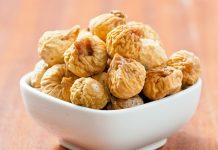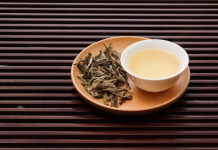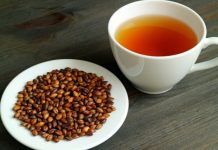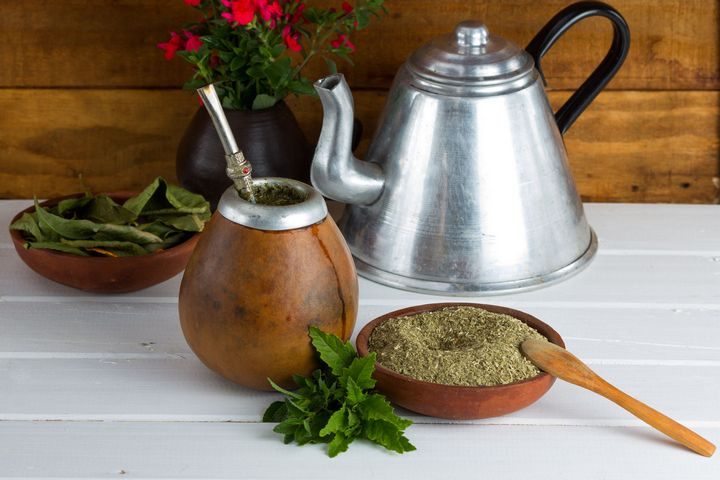The health benefits of Chickpea or Garbanzo beans for babies include supply of high protein, reduces the risk of anemia, good for bone growth, acts as a laxative, improves lower intestinal tract functionality, supplies antioxidants and is a good source of polyunsaturated fats.
Chickpea or Garbanzo bean or Bengal Gram, as it is known by different names around the world, is one of the very popular pulses or legumes. Scientifically, it is known by the name Cicer arietinum. It is known to be one of the oldest cultivated pulses in the world, which has been found in the Middle East 7500 years ago. From Middle East, Chickpea has spread to neighboring countries such as India, China, Philippines, Indonesia and several other places in Asia in the east and to Egypt, Greece, Italy and other parts of Europe in the west. The word Garbanzo is directly derived from old Spanish word garroba for chickpeas during the 17th century.

Today, there are two very popular varieties of Chickpea available. One is Kabuli, possibly from Afghanistan and the other is a popular Indian version. India is the highest producer of chickpea in the world with 59, 70,000 tonnes. Pakistan is the second largest producer, followed by Turkey, Australia, Iran, etc.
Nutrition found in Chickpea or Garbanzo
According to the National Nutrient Database from the United States Department of Agriculture, the nutrition found in chickpea is as follows
| Nutrition Component | Value per 100 g | Nutrition Component | Value per 100 g |
| Water | 11.53 g | Energy | 364 kcal |
| Protein | 19.3 g | Total Lipid | 6.04 g |
| Carbohydrates | 60.65 g | Fiber | 17.4 g |
| Sugars | 10.7 g | Calcium | 105 mg |
| Iron | 6.24 g | Magnesium | 115 mg |
| Potassium | 875 mg | Sodium | 24 mg |
| Zinc | 3.43 mg | Vitamin C | 4 mg |
| Thiamin | 0.4 mg | Riboflavin | 0.212 mg |
| Niacin | 1.54 mg | Vitamin B-6 | 0.535 mg |
| Folate | 557 ug | Vitamin A | 67 IU |
| Vitamin E | 0.82 mg | Vitamin K | 9 ug |
Can Chickpeas or Garbanzo bean be given to my baby?
Yes, you can start giving Chickpeas or Garbanzo beans to your baby, once he or she is between the ages of 8-10 months. As your baby is still growing, it is considered good to introduce lentils or legumes because of their high protein and fiber content.
Health benefits of Chickpeas or Garbanzo beans for Kids
High protein content: Chickpeas are one of the legumes or pulses known to be high in protein content. The protein content in chickpea is between 17 – 22% before the husking process and after husking, it ranges between 25 – 28%. This protein content is useful for growing infants and toddlers in the development of muscle in the body. Protein is not only useful for developing muscles but protein content is also useful for the development of internal organs. (Jukanti, Gaur et al, 2012).
Good source of polyunsaturated fats: Although the amount of fats found in chickpea seeds are very low, but still, one can find small amounts of polyunsaturated fats. These unsaturated fats are very good for health as it is good for brain development, good for eye sight and for neurotransmission.
Reduces the risk of anemia: Iron, one of the very important minerals required by the human body, is found in good quantities in chickpea seeds. 100 g of chickpea seeds has about 6 mg of iron in them. Iron is mainly useful for hemoglobin production and it reduces the chances of anemia.
Good for bone growth: Chickpea seeds are also high in the mineral calcium. As we know, that calcium is one of the chief elements that make up the bones. Adequate consumption of chickpea can make sure that your baby gets enough calcium for making his or her bones strong.
Good for lower digestive tract: Whole chickpea seeds are high in dietary fiber. About, 17 g of fiber can be found in 100 g of chickpea seeds. This fiber is very much helpful in not only eliminating constipation, but some of the fiber is not digestible even in the large intestine. This indigestible fiber is consumed by friendly bacteria residing in the large intestine. These bacteria in turn help in regenerating the cell walls of the intestine. (Finely, Burrell et al, 2008)
Supply of antioxidants: Garbanzo seeds also supply antioxidants. These antioxidants are helpful in fighting free radical scavenging, hydrogen peroxide scavenging and nitric oxide scavenging among others. The flavonoids and polyphenols present in Garbanzo seeds have been noted to responsible for this action. (Vadnere, Patil et al, 2012).
How to select and cook Chickpea seeds
Chickpeas seeds or Garbanzo seeds are available in any convenient store near you. Going for roasted or pre-cooked seeds is not a good idea because of the high sodium and oil content in them. You don’t want your baby to have junk food from the start, right?
So, the best thing to do is to get raw, uncooked seeds. Pre-cooked and roasted seeds have certain period of shelf-life and after that they’re useless. But, you can store uncooked seeds for much longer durations.
Before you cook the seeds, you can rinse them in running water or rub the seeds between your palms to make sure that no foreign material or any pesticide residue remains. Of course, to the extent possible.
Next, you can soak the seeds overnight, if you’re cooking for the first time to ensure that they cook properly. Uncooked seeds can be hard for your baby to digest. Make sure that you are able to turn it into a paste when you give it to your baby. For an 8 or 10 month-old baby, it will be easy to eat. You can find numerous recipes that make chickpea interesting for your baby. So use those recipes.
Also, make sure to add only a couple of teaspoons for the first time, as it could be heavy for your baby. As you progress, you can increase the amount, one teaspoon at a time.
Do not feed uncooked seeds to your baby. They could be very difficult for your baby to digest and can result in vomiting. Only soaked and boiled seeds must be given to babies and also for kids.
You can soak them overnight and sauté them for your kids who are above 5-6 years of age. You can sauté them with small quantity of oil, mustard seeds, cumin seeds, little bit of pepper powder and salt. Children would love it so much.
Another reason to be careful with uncooked seeds is that, there is a high risk of choking with dried chickpea seeds because they are very hard. Even overnight soaked seeds might appear soft and can also result in choking, if mishandled by infants and toothing toddlers.
Use fresh preparations of chickpea seeds and store them in refrigerator as soon as the feeding is complete. In this way, you can avoid bacterial fermentation that starts as soon as the thawing begins.












